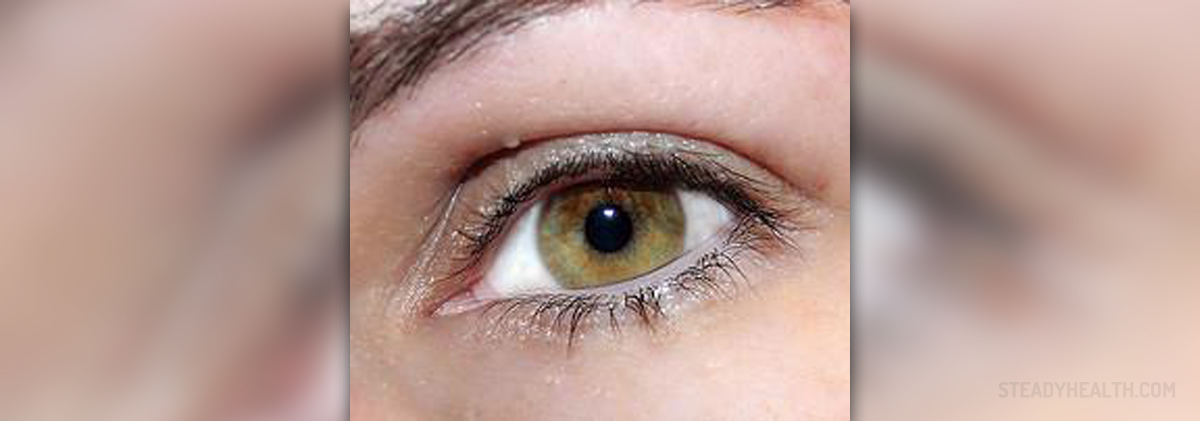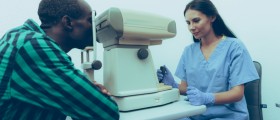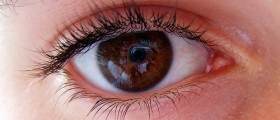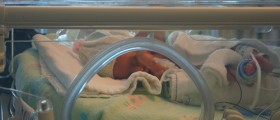
Diabetic Retinopathy Leads to Blindness
Diabetic retinopathy is a very common type of disorder observed in patients who have been battling diabetes for a prolonged period of time. In and of itself retinopathy does not have to pose a threat, depending on its type, nor does it have to produce any symptoms. Instead, it signals that there will be substantial damage done to the retina if the blood pressure and sugar are not reduced immediately. Retinopathy is characterized by the damage of the blood vessels found inside the eye. If the blood vessels burst, the blood gets spilled and the vision is seriously affected. At the same time, if the blood leaks from the damaged vessels and gets to the middle of the retina, there are bound to be vision problems as well. At the same time, the new blood vessels that get produced are also weak and they bleed easily resulting in even more difficulties.
In addition, there are three distinct types of retinopathy including background retinopathy, pre-proliferative retinopathy, and proliferating retinopathy. Background retinopathy is the mildest form of the syndrome but it still needs to be checked by a medical care provider on a regular basis. The pre-proliferative retinopathy is a little more serious form of the condition and is characterized by swollen and bloody vessels that periodically leak blood. The vision is likely to be affected by the pre-proliferative retinopathy. Lastly, this condition silently damages the retina, and only reveals symptoms when the harm is already grave. The most commonly seen symptoms include blurred vision, small dots appearing in the vision, problems when adjusting to dark or light spaces, and poor night vision. It should be noted that there is rarely any pain involved with diabetic retinopathy. Also, if left untreated, retinopathy can lead to detachment of the retina, which is a very serious medical problem as it is difficult to repair and may lead to permanent blindness. The primary cause of diabetic retinopathy is diabetes, and if not treated adequately can subsequently lead to complete loss of vision. For anyone who’s been diagnosed with diabetes it is very important to have regular eye exams as there are bound to be problems eventually. Every form of diabetes is associated with retinopathy, but not every individual suffering from diabetes will develop the condition to the same extent. There are various elements that place people at a higher risk for the disorder. For instance, having a high blood sugar level for a long time is known to lead to eye problems. Also, high cholesterol levels cause numerous heath issues, among them vision difficulties as well. The earlier the vision problems are detected the higher the possibility that they can be treated. One of the most common ways to deal with the new malfunctioning blood vessels is via laser treatments. The laser burns the edges of the retina, and is usually proposed to most patients suffering from the disease.
Methods of Treatment for Diabetic Retinopathy
The kind of treatment that will be administered to someone suffering from diabetic retinopathy depends on the subtype of the condition, its severity, as well as whether there have been any other kinds of treatment attempted before. The background retinopathy does not require immediate therapy. Rather, it just needs to be monitored regularly while the risk factors, such as high blood pressure and sugar, are kept at normal levels. When blood sugar is in check it can slow down the advancement of the disease. On the other hand, if retinopathy is at a later stage proper surgery needs to be performed. The course of surgical treatment usually begins with one of the available and required laser treatments. For instance, the focal laser treatment stops or slows down the leakage of blood into the eye by burning the weak blood vessels. This type of treatment does not take long, and it creates little spots and blurriness of vision that disappear after a few weeks. If the primary purpose of the laser surgery is to repair the damages done on the macula complete regaining of vision will not occur. The scatter laser treatment, on the other hand, attempts to decrease the size of the abnormal blood vessels. It takes more than one session to complete the treatment and the side effects associated with it, such as blurry vision, only last for about a day or two. Finally, the vitrectomy is a type of surgery that cleans the blood scars away from the center of the eye. While the first two laser treatments do not require any anesthetics, the vitrectomy is done either under a local or a general anesthesia. Vitrectomies are performed in more serious cases, and are sometimes followed by a laser treatment. A patient needs to wear an eye patch after the surgery as well as use eye drops for a couple of days to a few weeks until full recovery is achieved.

















Your thoughts on this
Loading...